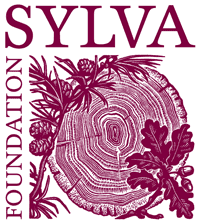Barnaby Scott of Waywood Furniture has completed his work on a OneOak piece making a stunning and unique chest. He tells us more about the inspiration behind the design and making of the OneOak chest.
When we were thinking of what to make out of our allocated boards from the One Oak, we quickly decided on two things:
1. That we would work ‘with the wood’ rather than fighting it, and
2. We wanted to do something that was truly a trademark Waywood piece.
1. Working with the wood.
The main board we were working with was very handsome, with a lovely chocolate brown patch rising from the base, and full of character. Now ‘character’ is a word often applied by timber merchants as a euphemism for ‘full of defects’, but one man’s defect is another man’s feature! It was obvious that we were going to get the best results by viewing each knot, each cluster of pips, each coloured patch, each split even, as an interesting feature to work with, rather than a blemish to excise and consign to the workshop boiler. This is a way we love to work when given the chance, but all too often considerations like structural soundness or a customer’s expectations get in the way. For one thing it means that we can fully embrace what nature has provided and show it off in what we hope is a respectful and enhanced way. But an equally important aspect is the fact that we do not waste this precious resource: what a tragedy it would have been if we had chopped the wood into small pieces and thrown half of them out. As it turns out, we have managed to use an exceptionally high percentage of the board, and all that has been burned is the crumbly and worm-riddled sapwood.
So what we ideally needed was a piece of furniture that used the wood in large slabs, rather than small components that excluded and wasted the characterful parts, or worse still components that suffered structural compromise from them. For example, to make a chair would have meant cutting out structurally sound legs etc, and throwing the rest of the wood away. In the end we opted for a chest made entirely from the oak – hinges included.
2. A Waywood classic
Back in the mid 1980’s when Waywood was formed, we used to make a lot of free-form, organic, sculptural furniture, including a series of chests with wooden hinges which, at the time, were something of a Waywood trademark. We have often thought that we would like to re-visit these chests – after all, others have used them as inspiration and re-interpreted them over the years, so why couldn’t we?! We didn’t want to do a straight repeat, but wanted to to allow the intervening years – over 25 of them – to contribute from their wealth of ideas and developments in technique.
Apart from flattering ourselves that we now have more discerning and sophisticated eyes for design, one of the most significant differences between Waywood of the 1980’s and the Waywood of today is that we have added to our armoury some of what the digital age has to offer, both in our design office and in our workshop. Now we are able to model a piece of furniture on the computer, and rather than experiment with dozens of chests before we arrive – knee-deep in wood shavings – at one that we really like, we can now make endless virtual versions from which to choose.
Similarly in the workshop, we now have much more advanced tools than the procession of angle grinders, scrapers and chisels upon which we had to rely exclusively in the past. Of course a CNC router will only do what it is told to do, in just the same way as one’s hands, but it can do it more quickly and more precisely, freeing up time that we can then spend on those things that truly benefit from being done with hand tools.
The result is a chest which is much more boldly shaped than we have ever dared to do in the past – having been able to develop and preview a model – with undulating forms and a textured surface. To us, these features celebrate the living wood; the shapes evoke movement, like ripples on a lake, and these are married with a texture that enhances the grain and reminds us of where this wonderful material comes from.
Barnaby Scott, Waywood Furniture









[…] chest […]
Pingback by SYLVA • reviving Britain's wood culture — July 16, 2012 @ 6:19 pm